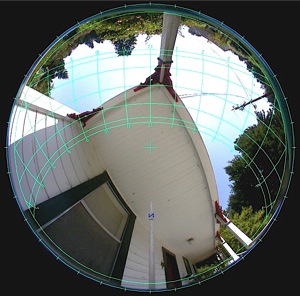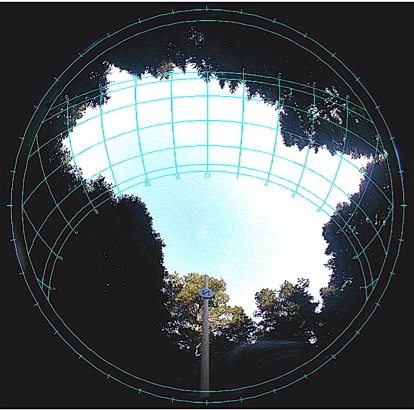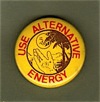If you want to construct a building to use solar energy it is a good idea to build it in the sun. But how much sun will shine on a particular site? You cannot easily tell by one or two visits, because the sun changes its apparent location from hour to hour and season to season, and these changes are different for every latitude.
However, with some camera equipment (see left) and a computer, it is easy to decide if a site is suited to a solar building.
I made these images with the “Sunpath” program developed by Pacific Gas and Electric.






Phone / Fax (707) 937 - 5774
POB 984, Mendocino, Ca. 95460 USA
Contact:
This direction is the sunny South.
This is the East, and Sunrise.
This is the West, and
Sunset.
This is the chilly North.

This is the high path of
the sun on June 21

This is the low path of
the sun on December 21

This is the middle, Equinox
path of the sun

Noon Line

360 Degree Horizon


at 39 degrees North latitude. The middle of the circle is straight up. Looking at the top of the circle is like looking south, with East on your left and West on your right. By studying the curving lines of the Sunpath you can tell the following things:
This Sunpath shows the entire sky above a small lot east of the town of Mendocino,
• The winter sun will shine on this for lot only about two and one half hours,
where the low path of December 21 crosses the sky, and the two months on
either side of the winter solstice will not be much sunnier.
• On the equinoxes, the lot will get about eight hours of sun per day.
• By deep summer, the high sun of June 21 will shine here for 10 hours.
• The bank of trees on the West (the right side in the photo) shades the lot
after 3 pm sun time pretty much all year. If the trees were on the lot, you
could trim them for more sun; but in this case they are not.
• On this sky dome photo you can see where the sun is by the glare, so you
can tell that the photo was taken a bit after solar noon, about 2 weeks
into June.
• This lot is not a shady place, but neither is it a good location for a solar
building; there is very little sun in winter & not much late afternoon
sun at any season, and the sources of the shade are not on the lot.



Summer sunset
7:20 PM
Winter
sunset
4:40 PM



Morning shade
This is the sunpath at the location of the proposed new classroom at the Jughandle Nature Center in Mendocino County. It has good potential for solar energy; the low winter sun path is mostly clear, and the morning shade comes from trees that can be trimmed back. (The early morning sun is important for warming a building after its temperature has dropped during the night.) The equinoctal and summer sun paths are good too, and in the coastal location of this project, solar heat is desirable all year.
Trees have taken over
This is the sunpath at the existing campground kitchen area at the Jughandle Nature Center. It is proposed to build a sort of pavillion here to give the area some shelter. The diagram shows that having any solar demonstration equipment here - solar ovens, for instance - would not be a very good idea, unless the nearby trees were severly cut back.



This sunpath tells you what time of day the front porch will be sunny, for every day of the year.
This sunpath will show you where to put a new skylight in an existing roof, for direct sunlight at specific times.
This sunpath shows what time of day, and in what season, there will be direct sunlight at the kitchen sink.


At the Equator, every day of the year has exactly 12 hours of sun and 12 hours of dark, and the path of the sun is right overhead and changes very little. Anyway, you don’t need solar heating at the Equator. (The photo is actually in Mendocino.)
At the latitude of Trondheim, Norway, there are only 4 hours of sun in midwinter, and the sun is far down toward the horizon as well. Not much hope of solar winter heating in high latitudes. But in midsummer the sun shines in Trondheim 20 hours every day. (The photo is actually in Mendocino)


Equator
63.3 Degrees North


Nikon camera with 183º fisheye lens, taking a photo up into the sky.


Home
Joe Ødegård, Architect

